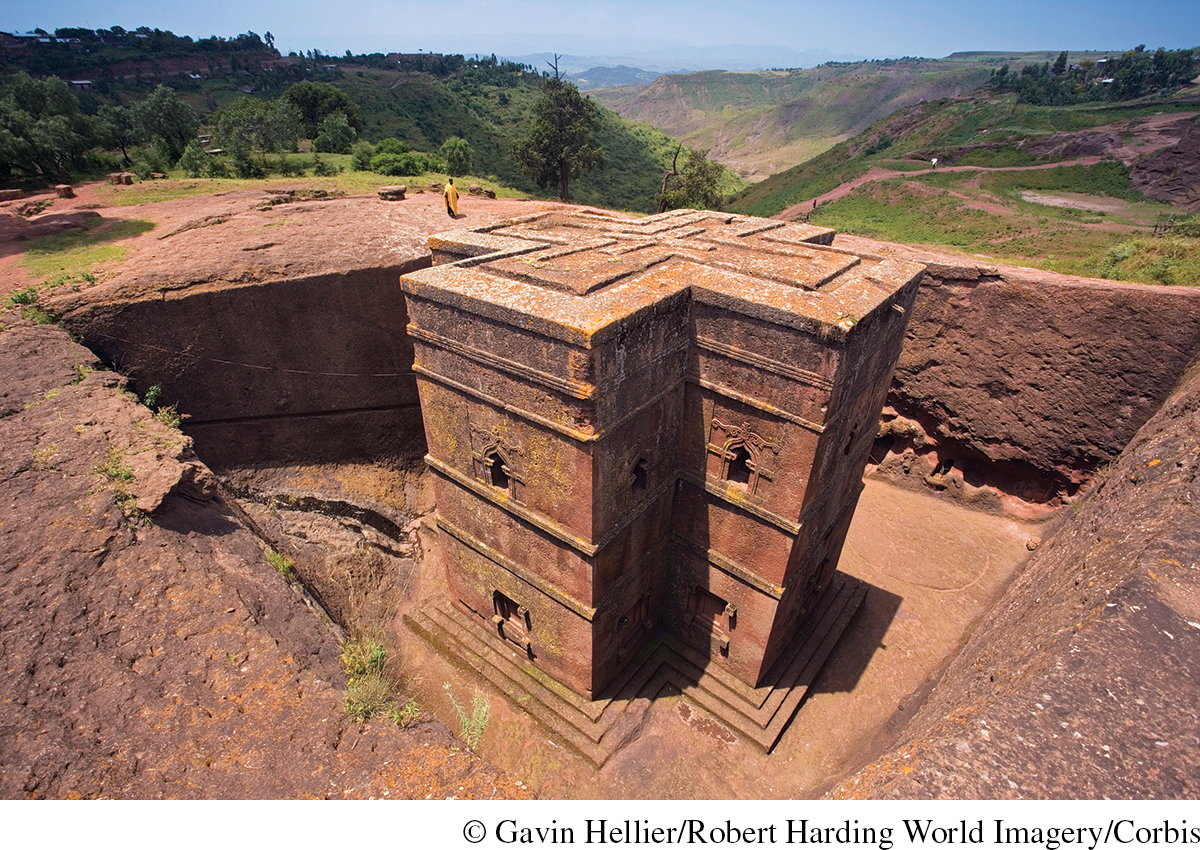African Christianity
The churches of Africa, like those of the Middle East and Asia, also found themselves on the defensive and declining in the face of an expanding Islam. Across coastal North Africa, widespread conversion to Islam over several centuries reduced to virtual extinction Christian communities that had earlier provided many of the martyrs and intellectuals of the early Church.
In Egypt, however, Christianity had become the religion of the majority by the time of the Muslim conquest around 640, and for the next 500 years or so, large numbers continued to speak Coptic and practice their religion as dhimmis, legally inferior but protected people paying a special tax, under relatively tolerant Muslim rulers. Many found Arab government less oppressive than that of their former Byzantine overlords, who considered Egyptian Christians heretics. By the thirteenth century, things changed dramatically as Christian Crusaders from Europe and Mongol invaders from the east threatened Egypt. In these circumstances, the country’s Muslim rulers came to suspect the political loyalty of their Christian subjects. The mid-
Even as Egyptian Christianity was contracting, a new center of African Christianity was taking shape during the fifth and sixth centuries in the several kingdoms of Nubia to the south of Egypt, where the faith had been introduced by Egyptian traders and missionaries. Parts of the Bible were translated into the Nubian language, while other writings appeared in Greek, Arabic, and the Ethiopian language of Ge’ez. A great cathedral in the Nubian city of Faras was decorated with magnificent murals, and the earlier practice of burying servants to provide for rulers in the afterlife stopped abruptly. At times, kings served as priests, and Christian bishops held state offices. By the mid-
An important exception to these various contractions of Asian and African Christianity lay in Ethiopia. There the rulers of Axum had adopted Christianity in the fourth century, and it subsequently took root among the general population as well. (See “The Spread of New Religions” in Chapter 4 and “Axum: The Making of a Christian Kingdom” in Chapter 6.) Over the centuries of Islamic expansion, Ethiopia became a Christian island in a Muslim sea, protected by its mountainous geography and its distance from major centers of Islamic power. Many Muslims also remembered gratefully that Christian Ethiopia had sheltered some of the beleaguered and persecuted followers of Muhammad in Islam’s early years. Nonetheless, the spread of Islam largely cut Ethiopia off from other parts of Christendom and rendered its position in northeast Africa precarious.

In its isolated location, Ethiopian Christianity developed some of its most distinctive features. One of these was a fascination with Judaism and Jerusalem, reflected in a much-